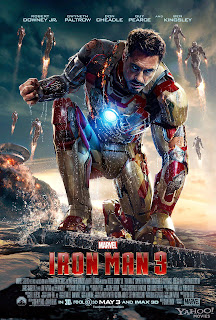Conventions of
Film Opening Sequences
Film opening
sequences/trailers are created to grab the attention of an audience and make
them wonder what will occur as the sequence progresses. They may also get an
idea of what the film is about and the ways in which the film was produced to
create a certain effect. Each opening sequence uses different techniques to
present ideas of the genre, themes and narrative approach. By the film studios
using conventions of various opening sequences, they are able to create a
successful opening sequence that would be attention grabbing for the audience.
The main conventions of
opening sequences would be: the use of credits (such as the name of the
producer, director, actors and writers), the title of the film, the production
company, music/sound, narrative enigma, misc-en-scene and location,
introduction of characters and genre signifiers.
Most, if not all films
include opening credits to inform the audience who will be within the film and
those who were apart of creating the film, such as the director. By including
these credits, the audience may be aware of the actors and perhaps other films
they have been in. Also, by mentioning the directors or producers, the audience
may be aware of directing styles and previous movies created by these people
and so may be aware of what they may expect to see. For example, within the
‘Skyfall’ opening credits, the main actor, Daniel Craig, is named so the
audience may be aware that the film they are watching is action packed.

Another convention of opening
sequences is the use of displaying the title of the movie before the first
scene begins. The name of the title can tell the audience what the film is
about and suggest what they may expect to see. The way in which the title is presented
may also give an indication of what genre the movie falls into. For example,
the ‘Gravity’ title name gives the impression that the movie will be about
space and how gravity may affect things. The use of the blue light also makes
the title look as if it is placed upon the atmosphere, emphasising the sci-fi
genre that the film belongs to.
The production company that
is shown at the beginning of a film is also a typical convention of opening
sequences. These are mentioned to give publicity to the company as well as
being recognised by audiences who may want to watch other films produced by
these firms. For example, ‘Rouge Pictures’ is a company who produced the film
‘Shaun of the Dead’. The audience for this film may enjoy watching films of this
genre and remember the production company, so when other films such as ‘Hot
Fuzz’ are released, the audience may want to watch them.
Genre signifiers are also
used within many opening sequences to give the audience a hint of what theme or
genre the film is based on. For example, within a horror film, many
conventional aspects may be used such as the use of dark colours, sounds with a
high dynamic range, blood and weapons. If the use of a scream is used within
the opening sequence, the audience may make consumptions that the film is of a
horror. The use of tense background music such as the sound of screeching
violins may also emphasise the genre being presented.
 |
| (Screen Capture of Scream with Knife) |
The use of sound is also another convention of an opening sequence to a film. The use of sound and music allows the filmmakers to create emotions and feelings within the audience. The dialogue and voiceovers may also give the audience more of an idea of what the film may be based on. The sounds may also be used to allow the audience to interpret various aspects of the characters, for example, if a character has a deep, low voice, they could be seen as the antagonist. Music can also be used to create the identity of a movie, such as the theme song used in ‘The Good, the Bad and the Ugly’.
 |
| (The Good, The Bad and The Ugly Film Poster) |
Another convention could be
the use of introducing one or more of the major characters within the play.
This allows the audience to figure out the main characters within the play and
how the story will be narrated. For example, within the opening sequence of
‘The Invention of Lying’, the main character is introduced as a typical office
worker, but the story progresses to show how he invented the idea of lying. The
narrative is told through his eyes and the audience feels how he does. By
introducing the main characters, the audience are able to make an emotional
connection with the protagonist.
 |
| (The Invention of Lying Film Poster) |
Narrative enigma is one of
the other conventions used within the opening sequences to movies. The element
of mystery creates an engaging opening as it allows the audience to question
why certain things happen and how watching the film will answer the questions.
For example, within the start of ‘Shawshank Redemption’, the main character is
convicted for murdering his wife and lover, but as the film progresses, the
audience understand that he was actually falsely accused of a crime he did not
commit.
The use of location and mise-en-scene is also a convention of film
opening sequences as it enables the audience to figure out what the film is
about or allow them to find out more information about other characters. By
production designers choosing particular objects to be placed within each set,
the audience can determine the genre of the film and perhaps what may occur.
For example, within ‘Iron Man 3’, the opening scene shows the image of a
business card. At first the audience may not think much of it, however, the
card then reappears nearer the middle of the movie where the audience find out
more key information about what was written on the card. This could show how
the use of the card allows the audience to keep track of how the villain may
have gained power and become a threat.





No comments:
Post a Comment